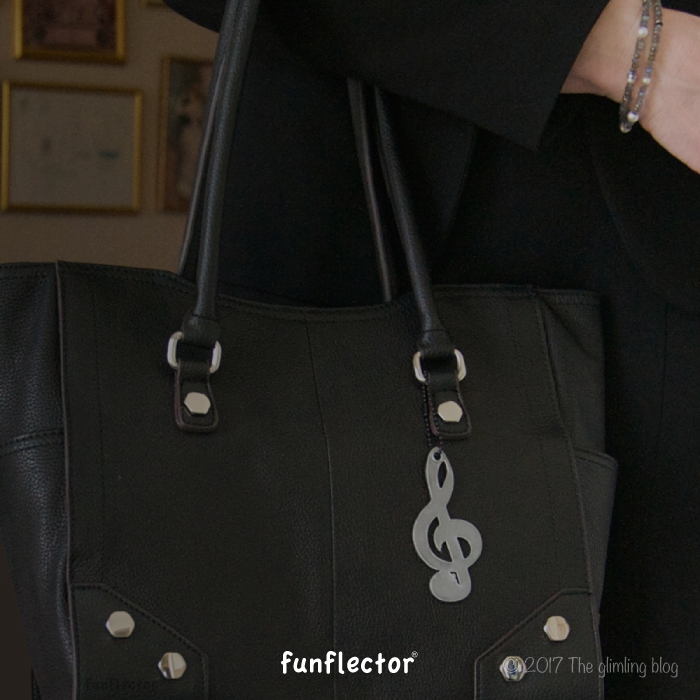Safety for Musicians and Music Lovers
Musicians and music lovers are at double risk ending up in nighttime pedestrian crashes. 1. They are mostly dressed in black. 2. They often head homewards in the dark after evening concerts and rehearsals. Obviously, these things won’t change, so the easiest solution is to add some reflective gear that fits right in. A black treble clef safety reflector is stylish and blends in with any black outfits. It can hang on instrument cases, jackets, purses, backpacks and bags.


Then in nighttime traffic, it puts its wearer in the spotlight with its reflective power. Thanks to a unique manufacturing technique, our black reflectors reflect as effectively as those in lighter colors. Check out all the colors in our webshop! When the music lovers in you family have more musical jewelry, Christmas ornaments, socks and scarves or ties than they need, the treble clef safety reflector will be a welcomed gift any time of the year.
The treble clef is a fascinating symbol and what a joy it was as a kid to master the acrobatics of the pen to write it! It starts from the center of the swirl, loops around itself, goes up and then straight down through the initial swirl to end with a “hook.” In modern notation, the swirl vortex is located on the second line of the stave, which is where the G4 note is. That’s why it also goes by the name G-clef.

Where Does the Treble Clef Come From
The story of the treble clef is somewhat obscure, but here is one plausible explanation. About 1000 years ago, the musical stave only had one line, instead of todays five, and a letter in the beginning would tell the pitch. The letter was accompanied by a gamut to indicate the range of notes of a voice or instrument. The G, followed by the gamut “sol, re, ut” turned into “G.S.” Later, the S migrated to a position above the G. In times of hand copying music, the S above the G eventually turned into the treble clef as we know it today. For the curious reader, this is described more in length by Jimmy Stamp in the Smithsonian magazine.

